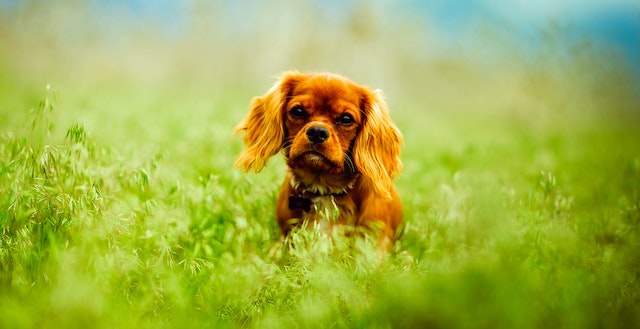Dogs are one of the most beloved pets in the world, and they bring joy and companionship to millions of people. However, dogs’ behavior can be affected by various environmental factors, including changes in weather and seasons. In this blog post, we will explore how weather and seasonal changes may impact dogs’ behavior and activity levels, and how you can help your furry friend stay happy and healthy in any conditions.

Summer
Summer is a time of warmth and sunshine, but it can also be a time of danger for dogs. As temperatures rise, dogs are at risk of overheating, dehydration, and other heat-related illnesses. In addition to these physical risks, summer can also impact dogs’ behavior and activity levels in several ways.
One of the most significant ways that summer can affect dogs’ behavior is by making them more lethargic and less active. Dogs may spend more time sleeping or resting during the day, as they try to avoid the heat. This reduced activity can lead to weight gain, muscle loss, and other health problems.
On the other hand, some dogs may become more hyperactive or anxious during the summer months. This may be due to increased energy levels, boredom, or other factors. Dogs may become more destructive, chew on furniture or other items, or become more vocal or agitated.
To help your dog stay happy and healthy during the summer, there are several things you can do. First and foremost, make sure your dog always has access to fresh water and shade. You can also keep your home cool by using air conditioning or fans and provide your dog with a cool and comfortable place to rest. If your dog needs to exercise, try to do so during the cooler parts of the day, such as early morning or late evening.
Fall
Fall is a time of cooler temperatures and changing leaves, and it can be a refreshing change from the heat of summer. For many dogs, fall is a time of increased activity and playfulness. As the weather cools down, dogs may become more energetic and enjoy running and playing outside.
However, fall can also bring some challenges for dogs. As the days get shorter and darker, dogs may experience seasonal affective disorder (SAD), a condition that can cause lethargy, depression, or other mood changes. Dogs may also experience shedding, as they prepare for the winter months. This shedding can be more intense for some breeds, and owners may need to groom their dogs more frequently to prevent matting or hairballs.
To help your dog stay happy and healthy during the fall, make sure they have plenty of opportunities for exercise and play. Take them for walks or runs during the daylight hours and provide them with stimulating toys or games to play with indoors. You can also help prevent SAD by keeping your dog active and engaged and providing plenty of socialization and interaction.
Winter
Winter is a time of snow and cold, and it can be a challenging season for dogs. Dogs may become less active and more sedentary during the winter months, as they try to conserve energy and stay warm. This reduced activity can lead to weight gain, muscle loss, and other health problems.
In addition to decreased activity levels, winter can also impact dogs’ behavior in other ways. Some dogs may become more irritable or anxious, while others may become more clingy or dependent on their owners for comfort. Dogs may also experience dry skin, cracked paws, or other skin and coat issues, due to the cold and dry air.
To help your dog stay happy and healthy during the winter, provide them with a warm and comfortable place to rest, such as a cozy bed or blanket. You can also provide them with protective gear, such as boots or coats, to help them stay warm and dry during walks or outdoor activities. Additionally, make sure your dog gets regular exercise, even if it is just short walks or indoor playtime. This will help keep their muscles strong and prevent weight gain. It is also important to maintain your dog’s grooming routine during the winter months, as this can help prevent skin and coat issues.
Spring
Spring is a time of renewal and growth, but it can also be a time of allergies and other health issues for dogs. As plants and trees start to bloom, dogs may experience seasonal allergies, which can cause itching, sneezing, and other uncomfortable symptoms. Dogs may also become more active and playful during the spring, as the weather starts to warm up.
However, spring can also bring some challenges for dogs. Dogs may be at risk of tick and flea infestations, as these pests become more active during the warmer months. Additionally, spring can be a time of transition for dogs, as they adjust to changing routines and schedules. This can lead to behavioral issues, such as separation anxiety or destructive behavior.
To help your dog stay healthy and happy during the spring, make sure they are up to date on all vaccinations and preventative care. This may include flea and tick medication, heartworm prevention, and other treatments. If your dog is prone to allergies, consult with your veterinarian about the best ways to manage their symptoms. Additionally, provide your dog with plenty of exercise and playtime, and try to maintain a consistent routine to help reduce stress and anxiety.
Conclusion
As we have seen, weather and seasonal changes can have a significant impact on dogs’ behavior and activity levels. From the heat of summer to the cold of winter, each season brings its own challenges and opportunities for dogs. By understanding these changes and taking proactive steps to care for your dog, you can help ensure they stay happy and healthy throughout the year. Whether it is providing your dog with plenty of water and shade during the summer, or a warm and cozy place to rest during the winter, small changes can make a big difference in your dog’s quality of life. So, get out there and enjoy the changing seasons with your furry friend!
Thank you for reading
We will be posting in-depth blog posts related to dog grooming, dog breeds, dog training tips, and much more. Don’t forget to tag us on Instagram or follow our FaceBook page!



